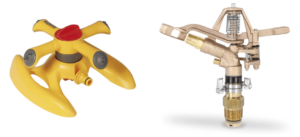First, let’s start out with a definition:
Commodity–a mass-produced unspecialized product. A basic good used in commerce that is interchangeable with other commodities of the same type.
My thesis of this blog post is that Wi-Fi is NOT an un-specialized product, but something that is highly unique and differentiates highly between various vendor options. A Wi-Fi Access Point is NOT interchangeable with other Wi-Fi APs. So the very premise of Wi-Fi being a commodity is wrong.
One of the many “take-aways” I had from last week’s Wireless Tech Field Day is the differences between many of the Wireless LAN Vendors regarding Wi-FI.
Some vendors treat Wi-Fi like the actual connectivity from Client Device to Access Point is a mere commodity. Nothing special. Nothing to talk about. Nothing but a “everyone does it the same so why try to be different” kind of attitude.
This allows those vendors to ignore the Layer 1/Layer 2 aspects of 802.11 and Wi-Fi and focus their energies on the “Other” things they might be good at. Some talk about Fabric Attachment, or Social Login, SDN, whether you have a controller, or their great Dashboard… and totally ignore the fundamentals of good Wi-Fi.
Other vendors see the RF and Layer-1/Layer 2 as a big differentiator between their product line, and their competitors.
I, for one, do not think of Wi-Fi as a commodity at all!
Despite what WLAN vendors try to tell you, my consulting experience in helping companies around the world to deliver a great Wi-Fi experience to their customers makes me return again and again to the fundamentals of Wi-Fi. A deep understanding of how 802.11 works, and basic understanding of Radio Frequency Fundamentals is crucial in designing Wi-Fi that just works… without the drama so many Wireless LAN installations are used to.
In my experience, many don’t “get it” in understanding Wi-Fi–and continually install bad wireless LANs and don’t understand why it doesn’t deliver to the clients, both the human client and the Wi-Fi client the experience as good as it should be.
I applaud the efforts of folks like George Stefanick and his blog who advocates designing Wi-Fi doesn’t have to be difficult. Just do it right the first time. (if you are interested in following other WLAN Professionals – Glenn Cate has a blog with a huge list of other WLAN Blogs)
Treating Wi-Fi like a commodity gets many into trouble with their Wireless LAN. Some go with the least-cost-bidder and use SOHO gear in an enterprise. As Wireless LAN Professionals we cringe when we see Linksys, D-Link, TP-Link, or Ubiquiti gear in enterprise environments. There are many reasons to go with Enterprise-Level Access Point–but this post isn’t focused on that aspect.

We especially cringe when people incorrectly call Access Points WAP’s…
I bring my personal take on this issue to the forefront when you look at the top three leaders in the WLAN space…
Cisco, Aruba, and Ruckus all focus on the actual Layer-1/Layer-2 experience for clients. Differential features like–Clean Air, RxSOP, ClientMatch, Adaptive Antenna Arrays, ARM/RRM, and focusing on SINR. All features to allow for a better Client to AP experience. This is especially true in higher density/higher capacity environments.
The logic is fairly simple and straight-forward:
- Lower Co-Channel Interference means higher SINR
- Higher SINR means higher data rates
- Higher Data Rates means more devices can share the same frequency
It is all about FREQUENCY REUSE – and how to best achieve it!
Contrast that with other vendors who instead treat Wi-Fi as a commodity, and treat AP’s like interchangeable parts–and instead only focus on the other features that make them unique.
If Wi-Fi was really a commodity, we would have no need for Packet Analyzers, Spectrum Analyzers, and Wireless LAN Professionals.
I for one, am glad that Wi-Fi is NOT a commodity–but still requires a combination of art and science in order to define, design, validate, and troubleshoot.
I enjoy the job security of being a Wireless LAN Professional–how about you?


